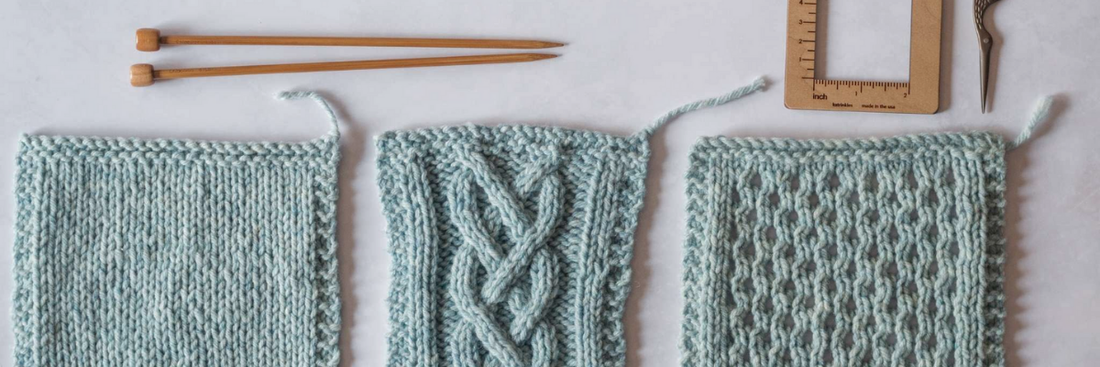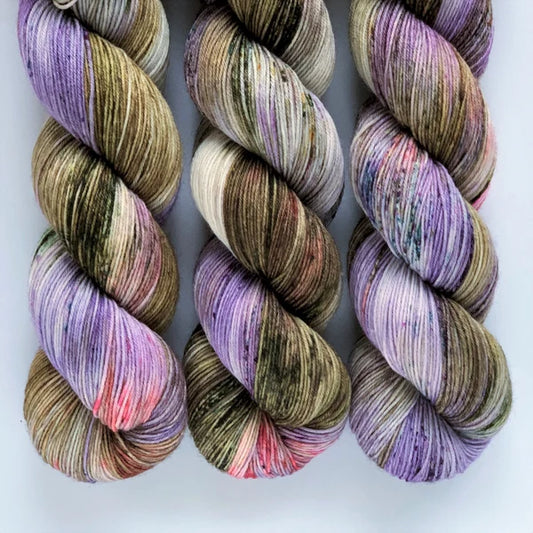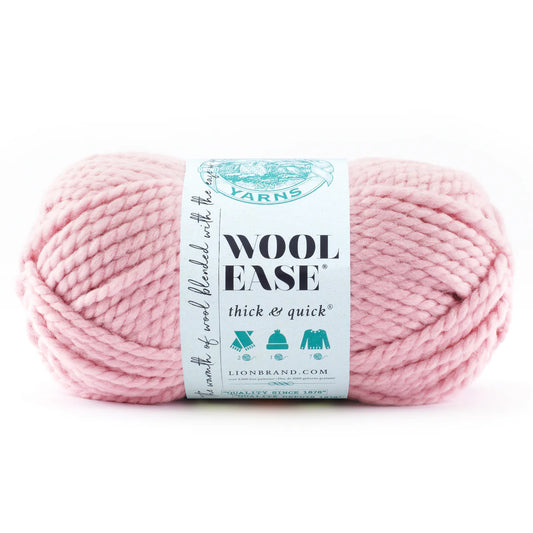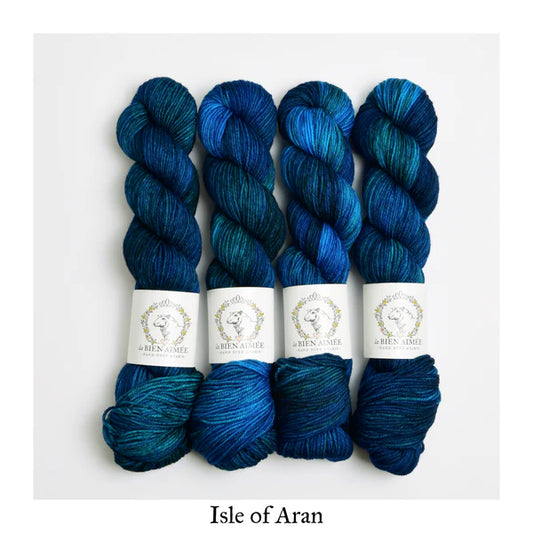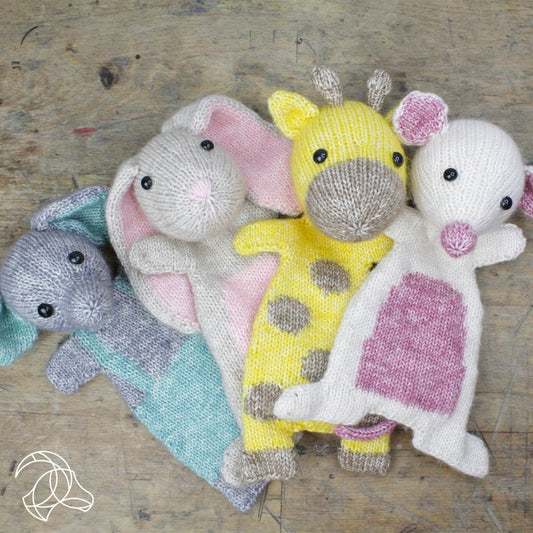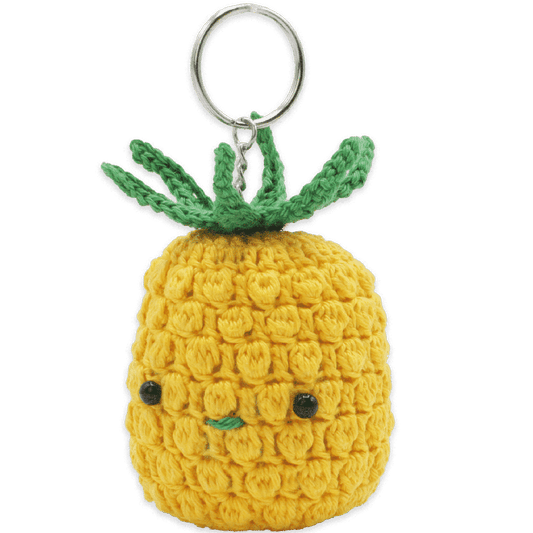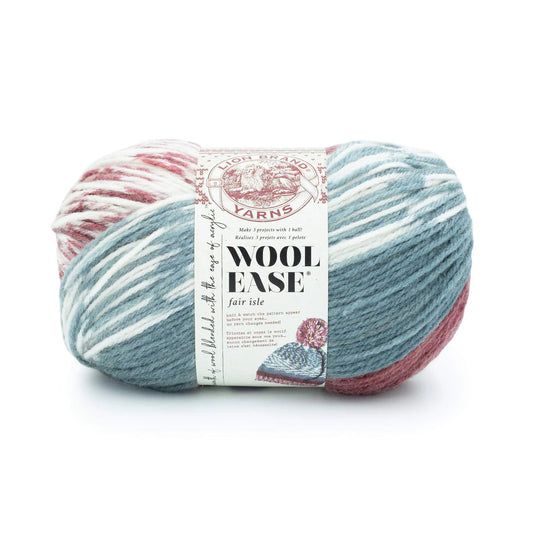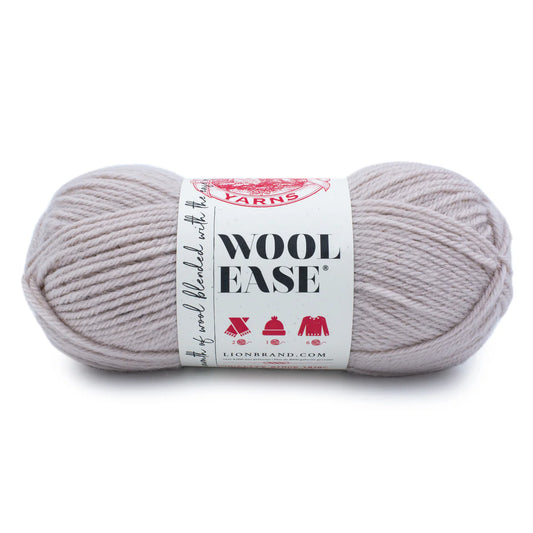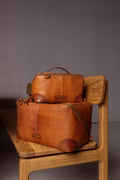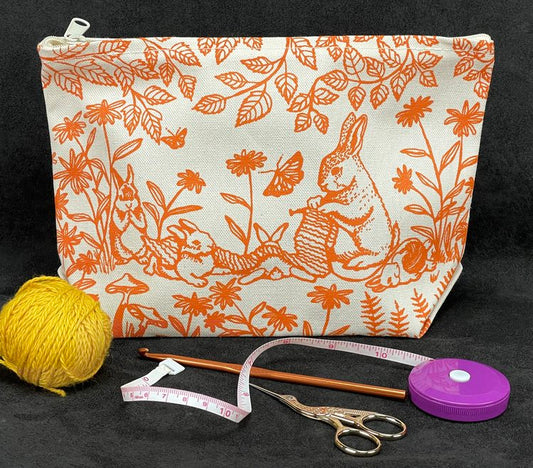Gauge according to the knitting or crochet word:
-
Gauge is the number of stitches per inch on a piece of knitwear. In general, the fatter the yarn, the fatter the needle you should use with it, the bigger the stitches it will make, and so you will need fewer of them.
-
A typical knitting pattern will include gauge instructions that look something like this:
-
Gauge: 10 sts/15 rows = 4 inches in stockinette stitch
-
Swatching: Generally, cast on 20 stitches and knit 20 rows, unless the patterns says to do the gauge swatch in the primary established pattern in the garment.
-
This means that if you knit 10 stitches for 14 rows in stockinette stitch, these stitches should measure 4 inches in width and height. This piece of knitting is called a gauge swatch. If your gauge swatch matches the gauge of your pattern, then you’ve achieved the correct gauge (or, tension) that your pattern requires. Now you can start knitting.
-
Gauge may mean you will have to do a little bit of math.
Gauge is a balancing act that involves three things:
-
Needle size
-
Yarn weight
-
Your knitting tension
-
Some patterns suggest you measure your gauge swatch after you have blocked it. (this is more recent in the past 10 years or so.)
-
If you do not get the suggested gauge for the pattern, there is a possibility you will run out of yarn.
-
Generally, we can achieve the stitches per inch, but rows per inch are more difficult in my opinion. But since many patterns give you the finished measurement, I do not worry about my row count.
No one likes to do a gauge swatch – because it means you cannot dive right into your project. Over time a knitter or crocheter will say, I’m always too loose or too tight, and will learn that they need to go up a needle size or down to get the recommended gauge by the designer. BUT! There is more than one way to conquer gauge.
Five Variables:
-
The hands
-
The needles
-
The knitting method (continental, English, left handed, right handed,)
-
The yarn
-
The pattern
Guage will change as you get more comfortable with the pattern – but not by much.
Swatching for circular fabric is different than flat. Two types of way to swatch in the round.
Determining Gauge When Combining Various Weights of Yarn
This trick seems to work magically for me. For instance, if I am combining two fingering weight yarns and they each call for a size 2 needle and add 2 + 2 = 4, then I go up one more size and use a size 5 needle. Now, if knitting a shawl and most shawl patterns call for fingering weight yarn and a size 5 needle, then if I want the same effect then when combining two fingering weight yarns I would use a size 10 needle as 5 + 5 = 10 but, if I do not like the gauge – which you still need to use a gauge swatch, then you may want to change your needle size. Let me STRESS, GAUGE is IMPORTANT.
This is my sample guide when combining yarns below:
-
Fingering + fingering = DK = size 4 – 6 needle
-
Fingering + Sport = Dk or maybe a light Worsted – 6 – 8 needle
-
Sport + Sport = light worsted – 7 – 8 needle
-
Dk + Fingering = heavy worsted – 7 – 9 needle
Now basing on what needle size the yarn calls for:
-
Bulky (US 10) + Fingering (US 2) = Size US 11 needle
-
Bulky or Chunky (US 10) + 2 Fingering (US 2) = Size 13 needle
-
DK (US 5 – 6) + DK (US 5-6) = Size 10 or 11 needle
-
Fingering (US 1-2) + Fingering (US 1-2) = 4 – 6 needle
-
Super Bulky (US 13-15) + Worsted (US 8) = US 19 needle or bigger
-
Super Bulky (US 13-15) + DK (US 5-6) = US 19 or larger
When adding mohair even if it says lace weight due to the fluff of the mohair – I treat it like a DK when I am combining it with another yarn, especially Suri Silk Mohair. REMEMBER, not all DK, Fingering, Worsted, or Chunky are not created equal – one may be more dense; where another may have more airiness or fluff.
When combining yarns, I don’t really pay attention to the care of the yarn, as I know I will handwash the item or gentle cycle, cold water, in the wash and damp dry. I do try to stay away from a 100% wool that is not superwash (as I don’t trust it from not felting).

Check out the video below for more details:

